Gum Treatment NJ
Gum treatment in NJ integrates advanced methods and traditional techniques to address periodontal health thoroughly. With a focus on eliminating plaque and tartar, both scaling and root planing, alongside innovative laser therapies, are employed to effectively treat gum disease. These approaches not only target infection but also encourage tissue healing and reduce inflammation. Regular check-ups and proper hygiene play an essential role in preventing gum issues. What advanced technologies are transforming gum care today?

Key Takeaways
- Find dental clinics in NJ offering scaling and root planing for gum disease treatment.
- Explore NJ clinics providing innovative laser therapies for precise and minimally invasive gum care.
- Check for NJ dentists who use antibiotics alongside mechanical debridement for comprehensive gum treatment.
- Look for NJ dental practices offering routine professional cleanings to maintain gum health.
- Consider NJ clinics that incorporate preventive care, including fluoride treatments and natural remedies, for healthy gums.
Understanding the Importance of Gum Health
Periodontal health is a fundamental aspect of overall oral hygiene, with its significance underscored by its direct impact on systemic health. The maintenance of oral hygiene is critical in preventing gum disease, which is characterized by the inflammation and infection of periodontal tissues. This condition arises due to bacterial plaque accumulation, which, if unchecked, progresses to more severe forms, including periodontitis. Effective oral hygiene practices, such as regular brushing and flossing, are essential in mitigating the risk of gum disease. Furthermore, professional dental cleanings play a pivotal role in removing tartar that cannot be eliminated by conventional home care. The interrelationship between gum health and systemic conditions, such as cardiovascular disease and diabetes, highlights the critical importance of maintaining periodontal health.
Common Signs and Symptoms of Gum Disease
Gingivitis, the initial stage of gum disease, often presents with subtle symptoms that can easily be overlooked. Clinically, one may observe erythema, edema, and occasional bleeding upon probing or brushing, indicative of inflammation. Patients frequently report halitosis, which can be persistent despite rigorous oral hygiene practices. As the condition progresses, the gingival margin may exhibit recession, leading to increased tooth sensitivity. In more advanced stages, known as periodontitis, there is potential for periodontal pocket formation, attachment loss, and alveolar bone resorption. Mobility of teeth may occur if left unchecked. Regular dental examinations are vital for early detection. Effective oral hygiene, including interdental cleaning and professional prophylaxis, is essential to mitigate the progression of gum disease and maintain periodontal health.
Traditional Gum Treatment Options
Traditional gum treatment options encompass a variety of techniques aimed at managing and mitigating the effects of gum disease. Among these, scaling and root planing is a non-surgical procedure targeting the removal of plaque and tartar from tooth surfaces and beneath the gum line. This method is essential for reducing periodontal pockets and promoting reattachment of the gums to the teeth. Scaling root planing is often complemented by antibiotic therapy, which involves administering antimicrobial agents to eliminate pathogenic bacteria responsible for infection. These antibiotics can be delivered systemically or locally, enhancing the overall effectiveness of the treatment. By combining mechanical debridement with pharmacological intervention, these traditional approaches effectively reduce inflammation and halt the progression of periodontal disease.
Innovative Laser Therapies for Gum Disease
Emerging laser technologies have revolutionized the treatment of gum disease by providing precise and minimally invasive options that enhance patient outcomes. Utilizing laser technology, practitioners can target and remove diseased tissue with remarkable accuracy, minimizing damage to surrounding healthy structures. This precision reduces the risk of post-operative complications and accelerates healing processes, demonstrating significant patient benefits. Unlike conventional methods, laser treatments often eliminate the need for sutures and reduce bleeding during procedures. Additionally, laser technology is associated with decreased discomfort and lessened anxiety for patients, owing to its minimally invasive nature. The bactericidal properties of lasers also contribute to effective sterilization of the affected sites, thereby reducing infection risk. These advancements underscore the transformative impact of laser technology in periodontal therapy.
Preventive Measures for Maintaining Healthy Gums
Maintaining ideal gum health necessitates a multifaceted approach that includes consistent oral hygiene practices and regular professional dental care. Fundamental to this regimen is the daily adherence to brushing and flossing, which effectively removes plaque and prevents periodontal disease. The utilization of fluoride-based toothpaste and antibacterial mouth rinses further enhances oral hygiene by reducing microbial load. Regular dental check-ups facilitate early detection and intervention of potential gum issues. Incorporating natural remedies, such as rinsing with saline solutions or using aloe vera gel, may offer adjunctive benefits due to their anti-inflammatory properties. Additionally, a diet rich in vitamins C and D supports gum health by promoting tissue repair and reducing inflammation. Collectively, these strategies contribute to the long-term preservation of gum integrity.
Choosing the Right Gum Treatment in NJ
How does one navigate the array of gum treatment options available in New Jersey? The process begins with a thorough diagnostic evaluation, essential for informed treatment selection. Dentists assess periodontal health through clinical examinations and radiographic imaging, identifying the severity of gum disease. Once diagnosed, treatment options range from non-surgical interventions, such as scaling and root planing, to surgical procedures, including flap surgery and grafts. Key factors influencing treatment selection include disease stage, patient preferences, and medical history. Patient preferences play a significant role; some may prioritize minimally invasive techniques, while others may opt for extensive surgical interventions. Additionally, understanding insurance coverage and financial considerations is vital. Personalized treatment plans are crafted to optimize outcomes and guarantee patient satisfaction within New Jersey’s diverse healthcare landscape.
Visit Us Today
Let OraCare Dental Centre be your partner in lifelong oral health. Whether it’s your first visit or your fiftieth, we’re here to make your dental experience exceptional.
